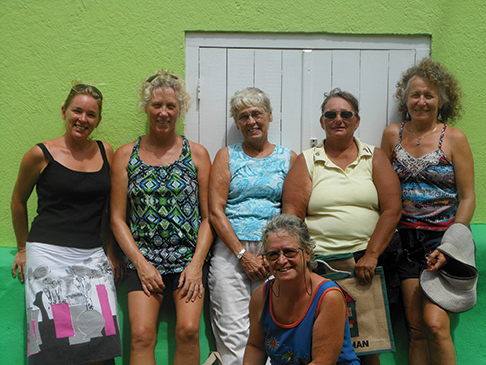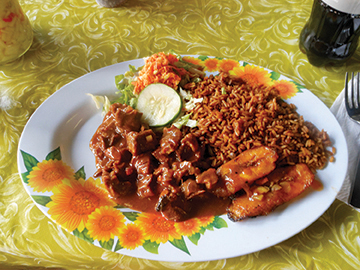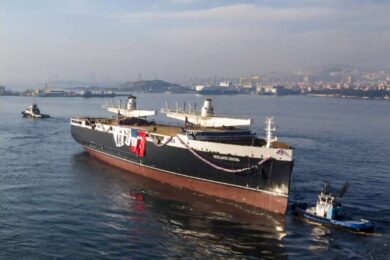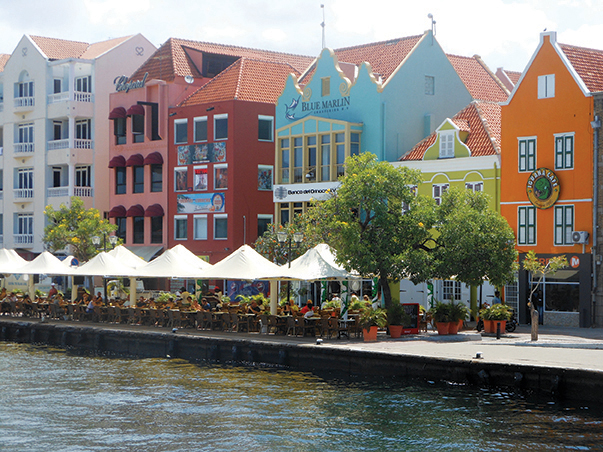Willemstad, Curacao (published January 2013)
Every few weeks, our group of female friends rides the bus from our anchorage in Spanish Waters, Curacao into Willemstad for a day in town. The men call it “Womanless Wednesday.” Spanish Waters is a large harbor where cruisers heading to the western Caribbean or holing up for hurricane season can enjoy a sheltered anchorage.

We come ashore at Fisherman’s Harbour, where Norman’s open-air pub offers a friendly meeting place with good food and drink, a book exchange, and cruiser happy hours. A free shuttle bus stops here daily, running to Vreugdenhil’s supermarket and nearby marine, hardware and auto parts stores, as well as a laundry service. Public buses run regularly, and for 1,60 guilders (about 90 cents), we ride from Fisherman’s Harbour into Willemstad, enjoying the sights along the way.
From the bus station, we find the smoothie wagon just outside the post office. We choose various fresh tropical fruits to be blended into luscious smoothies, then visit the New Market, an airy, covered space filled with vendors of produce, fish and meats, handicrafts, and all sorts of curious items.
We wander through the colonial streets of Punda. Willemstad is divided by its deep commercial channel into two sides—Punda and Otrabanda. Punda is the upscale side of town. Made wealthy by the trade of the Dutch East India Company, it contains scores of well-maintained commercial and residential buildings dating from the late 17th century. These colorfully painted buildings now house international retailers and luxury jewelry shops, as well as local businesses.
We explore the old fort guarding the entrance to the harbor, which houses government offices. The church has a cannonball fired by British Captain Bligh still embedded in its walls. The channel waterfront is nearby, with quayside cafes where you can enjoy a cappuccino and people-watch. As ships enter the channel, bound for the oil refinery in the inner harbor, the century-old pontoon bridge swings open. City ferryboats run between Punda and Otrabanda, assuring that foot traffic can move freely between the two districts.

By now it’s time for lunch. We head to the Plaza Bieu, which houses six busy kitchens serving cheap and cheerful local dishes. There’s delicious beef stew, slow-cooked in a mild tomato-based sauce, with rice, sweet fried plantains, a garnish of salad and funchi (similar to creamy polenta). You can also try savory goat or chicken stew and grilled fish—typical local cuisine. For dessert, sample a tasty pumpkin pancake dotted with raisins and spiced with cinnamon. We eat at the picnic tables inside, surrounded by downtown workers and families. A satisfying and filling experience!
We stop to buy fresh seasonal produce from Venezuela and Colombia at the Floating Market. The selection varies, but it’s the best quality and price around. With backpacks loaded, we head back to the bus stop, then to our boats. We find our menfolk content. Clearly, they’ve enjoyed “Womanless Wednesday” as much as we have.

















